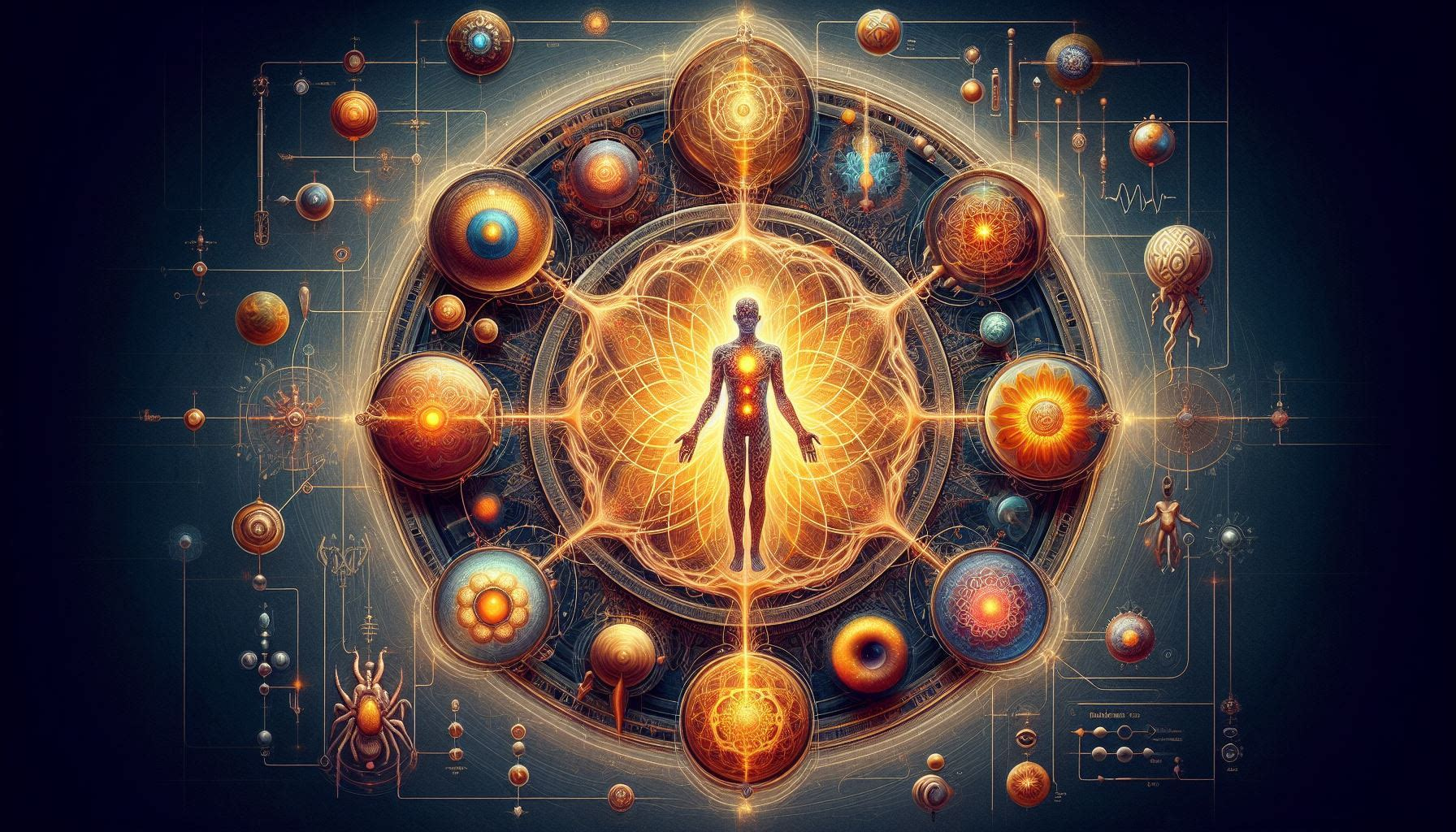What is the Shape of the Soul? Understanding the shape of the soul is essential. There are three primary beliefs about the soul’s form – omnipresent, body-shaped, and atomic (extremely small). Let’s explore each of these concepts as per the Vedas (Upanishads), Vedanta, and the Bhagavad Gita.
Is the Soul Omnipresent?

The belief that the soul is omnipresent implies that the soul exists not only within our bodies but throughout the universe. This suggests that the soul is as vast as the cosmos, permeating all spaces, and hence, is termed omnipresent. This also indicates that there is only one soul. If we consider multiple souls, each would have to occupy different spaces, leading to some areas devoid of a soul, contradicting the principle of omnipresence.
However, we feel our bodies, not others’. An individual doesn’t perceive themselves outside their body. We experience our pain, while others can only guess it. This proves that our existence is limited to our bodies, not beyond. We consider others separate from us, indicating that everyone is different, hence, there must be multiple souls – a belief also echoed in the Vedas (Upanishads), Gita, and Puranas. Therefore, the soul is not omnipresent.
Is the Soul Body-Shaped?
The assertion that the soul is body-shaped means that the soul is as large as the body, neither smaller nor larger. If we consider the soul to be body-shaped, then any change in the body would imply a change in the soul. From the womb to childhood, youth, and old age, the body changes in size. So, which body size should we consider as the actual size of the soul?
The Bhagavad Gita (2.23) states, “Weapons cannot cut the soul, and fire cannot burn it.” This proves that the soul is not body-shaped. Even if we consider the soul to be body-shaped, Vedanta disagrees. Vedavyasa in Vedanta (2.2.34) states, “It is not logical to consider the soul to be of the same size as the body.” It is illogical because depending on the state, the soul’s size would have to be considered different, which contradicts the Gita and Vedas. Therefore, considering the soul to be the same size as the body is entirely flawed.
Is the Soul Atomic (Extremely Small)?
Since the soul is neither omnipresent nor body-shaped, it must be atomic. Because it is atomic, it can inhabit bodies of various sizes, from an elephant to a human, an ant, and even microscopic organisms. Vedanta (2.3.22) states, “There is a word in the scriptures (Vedas) that denotes the soul as atomic, and other words also indicate this (the soul is atomic).” For example, Mundaka Upanishad (3.1.9) states, “This atomic soul is to be known by the mind.”
Therefore, as per the Vedas (Upanishads), Vedanta, and Gita, the soul is atomic, meaning extremely small, even smaller than what can be seen with the eyes. But even this extremely small or atomic entity must have some length and breadth, how much is it? To know this, read ‘What is the size of the soul? – As per the Vedas’.
